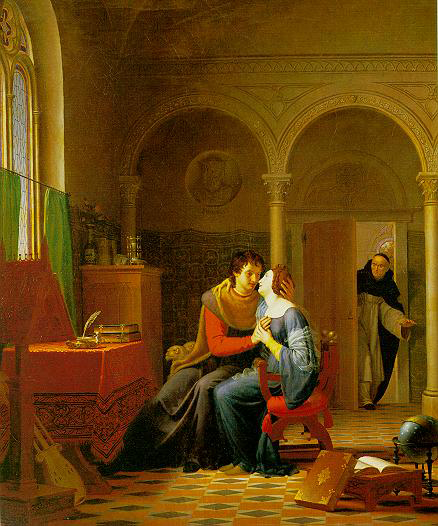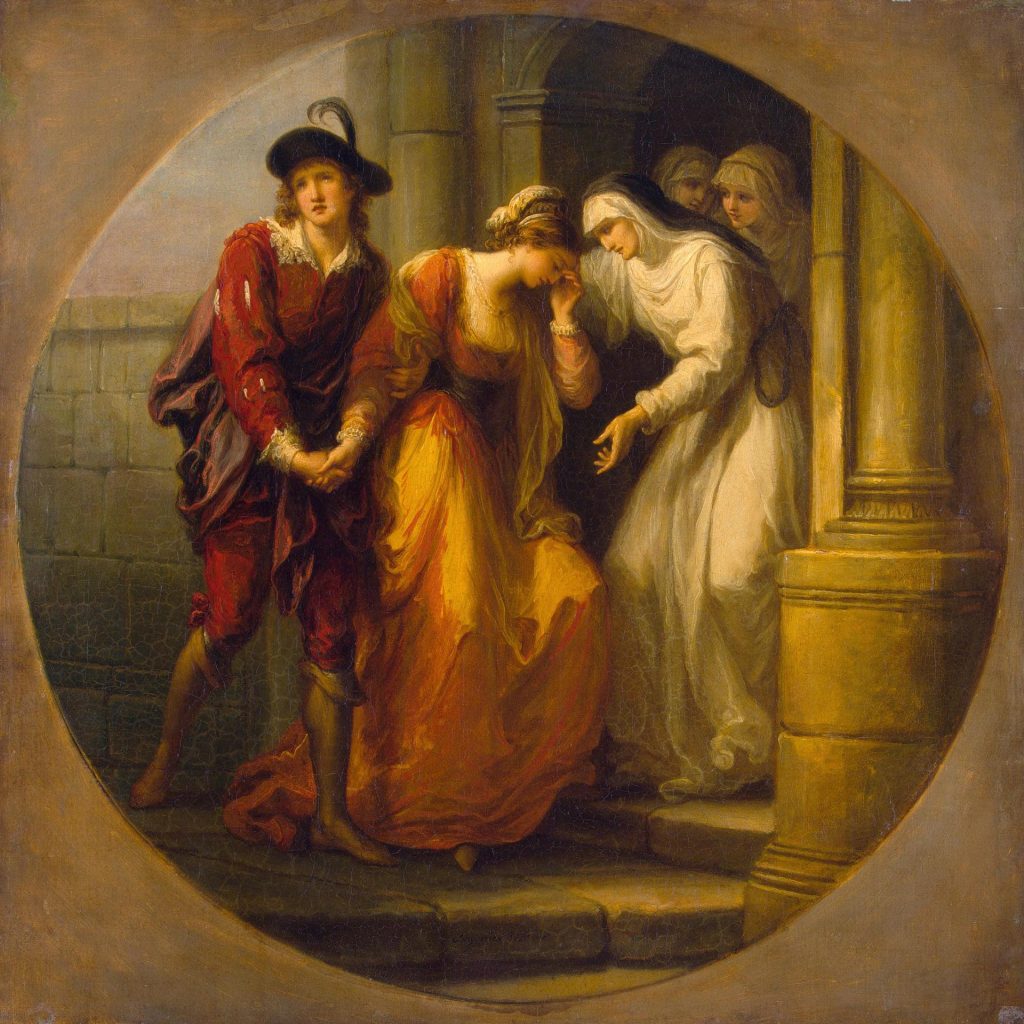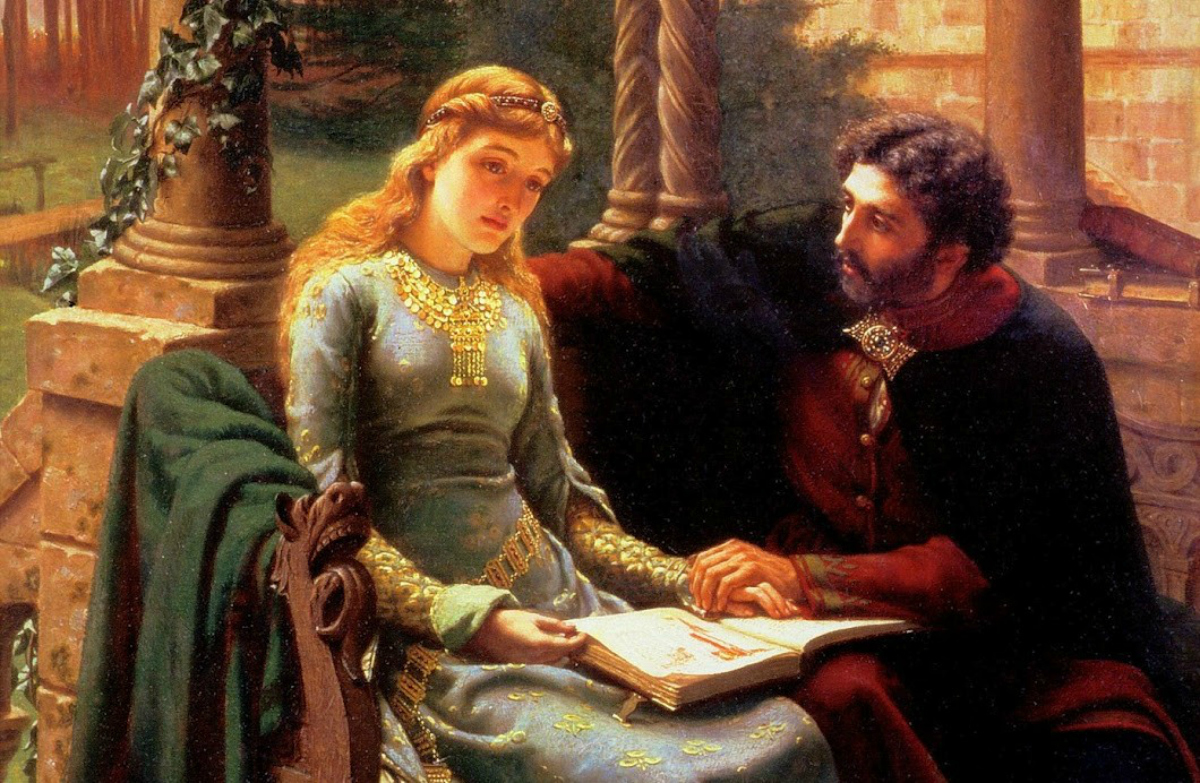One of 2018’s wearying inevitabilities is that even the most cursory glance at the news is likely to bring you a fresh tale of sexual assault—and that much of the resulting commentary is bound to be almost as jarring as the news article itself. So many people are so very invested in making the unconscionable seem tolerable, even natural. Reading one such story recently brought me back to the first time I visited the Père Lachaise cemetery in Paris, when I didn’t have to pore over a map in order to find the tomb of Peter Abélard and his wife, Héloïse of Argenteuil.
Despite the dreary autumn weather, it drew a steady stream of visitors, probably second in number only to those drawn to the grave of The Doors’ frontman Jim Morrison. Many of those who gathered around the couple’s supposed burial site (whether or not the remains Abélard and Héloïse truly lie inside the tomb, an early nineteenth-century confection made out of actual medieval masonry, is a matter of dispute) were young women. Several of them wore large crowns of artificial flowers—the tail-end of that summer’s fad—although the flowers they lay at the railings surrounding the tomb were real.

Why were so many young people drawn to this monument to two people who’ve been dead for 800 years? A cursory search online suffices to answer that question, and also shows some of the persistent themes in how Abélard and Héloïse are framed, particularly for a popular audience. They are “one of history’s most passionate and romantic true love stories … [with] much to teach us about our own understanding of religious tolerance, sexual equality and intellectual freedom”; their relationship was one of the “top 10 most torrid love affairs” ever; the distressing way in which their relationship ended “ultimately served as a catalyst for their greatest intellectual achievements.” One writer in the New York Times even assures us that “there’s a grandeur to high-stakes romance, to self-sacrifice, that’s missing from our latex-love culture — and it’s a grandeur we perhaps crave to recover.”
(Yes, you read that last quotation correctly. Someone in a national newspaper argued that condom use is a sign that people in the twenty-first century no longer know how to engage in sweeping romance, which is a hot take of a kind that I think even Emily Brontë at her most wuthering would have balked at.)
This framing of Abélard and Héloïse’s relationship isn’t unique to pop history, of course. The first time I heard of them, during an undergraduate survey course on medieval history, they were referred to as one of the great love stories of the Middle Ages. Even at the time, reading their letters to one another, I felt uneasy with that framing, but it was not until much later that I would acquire the vocabulary to help me articulate that unease: coercion, gaslighting, manipulation.

Here is the story of Peter Abélard and Héloïse of Argenteuil as I lay it out to my students now. In the early twelfth-century, a young man from Brittany called Peter Abélard arrived in Paris, and quickly made a name for himself as a highly promising student at the university there. Also resident in the city was one Fulbert, a canon of the cathedral of Notre-Dame, and his niece Héloïse. Abélard heard of Héloīse’s beauty and intelligence, and having decided—before he had ever met her—that “she was the one to bring to [his] bed“, Abélard “sought an opportunity of getting to know her through private daily meetings and so more easily winning her over.” Fulbert agreed to hire Abélard as Héloïse’s teacher, to provide her with the kind of university-level education that would not ordinarily have been available to a woman. At this point, Abélard was in his mid-thirties, Héloïse perhaps in her late teens.
Abélard and Héloïse entered into a sexual relationship. To make sure that no one would suspect them of this, Abélard sometimes beat her, though he wrote that his “blows were the marks not of anger but of the tender affection that is sweeter than any perfume.” There was little subterfuge could do to hide the consequences of their sexual activities, though, once Héloïse became pregnant. Abélard sent her to Brittany to give birth to their son, then secretly married her, then bundled her off to the convent of Argenteuil. Héloïse’s relatives assumed, based on this, that Abélard had abandoned her, and so revenged themselves on him by beating him up and castrating him. Abélard—now barred by his marital status from pursuing an ecclesiastical career and by his impotence from fulfilling a key component of the medieval understanding of a husband’s role—became a monk. Héloïse became a nun, and later abbess of the famous monastery of the Paraclete.

In later years, Abélard wrote a kind of memoir, the Historia Calamitatum (“History of my Misfortunes”), and the couple exchanged a series of lengthy letters—intelligent, erudite, full of references to scripture and classical literature—from their respective monastic communities. Héloïse seems to have borne little animosity towards Abélard, beyond chastising him for not writing to her often enough. She may not have understood her relationship with Abélard as one in any way marked by abuse or assault, and as Irina Dumitrescu rightly reminds us, we “diminish Héloïse if we see her as an eternal teenager, a mere victim of Abelard’s narcissistic love.”
And yet, when I sit with Héloïse’s letters, I can’t help but hear a woman whose life, whose very self, was shaped by a teacher whose pedagogy emphasised submission and a culture which eroticised violence against women. In her letters, Héloïse refers to Abélard as master (dominus), father, husband; she calls herself his slave (ancilla), daughter, and wife. She would rather be his whore (meretrix) than an empress (imperatrix), she writes, which when taken alone has a thrilling ring of the empowered modern woman to it, but is rather less so when you see how repeatedly Héloïse defines herself in relationship to Abélard and his wants.
One of the great love stories of the Middle Ages? I suppose that depends on how you define the term “great.”
Or the term “love.”

A few weeks ago, I introduced the students in the upper-level undergraduate course I’m teaching on medieval women’s history to Abélard and Héloïse. The students had read Carissa Harris’ article on the medieval English literary genre known as the pastourelle—which Harris argues both normalised rape narratives and provided space to challenge rape myths—as part of a broader discussion of the history of ideas around sexual consent, assault, and bodily autonomy. Thinking about the modern framing of Abélard and Héloïse as the quintessential passionate romance helped us to complicate ideas about the barbaric Middle Ages and the enlightened present. As young adults who’ve come of age during the #MeToo movement, they were far quicker to grasp the disturbing implications of Peter and Héloïse’s relationship than I was as an undergraduate.
I’m proud of the ways in which my students navigated multiple conversations about sexual assault that week—deploying analytical skills and fierce empathy in equal measure—but I still don’t know if I did them justice in the classroom. It’s one thing to talk about how Peter Abélard’s historical reputation has largely survived the condemnation of his own words. It’s another to have that conversation in an academic setting, within a system and a space where diversity statements say one thing and actions another.
Is it possible to sit in an American college classroom in 2018, to be in a position of authority and to talk honestly about the lessons to be learned from Abélard and Héloïse and yet avoid being a hypocrite?
The words change. More voices speak out. But who tells the story, and how it ends: well, that always seems to stay the same.

This is wonderful! Loved the post, and the illustrations are perfect.
Apparently we were thinking along the same lines yesterday:
https://oldestvocation.com/2018/11/25/moi-aussi-joan-of-arc-me-too/
Thank you so much! And yes, I think that like Héloïse, Jeanne is a good example of a medieval woman who’s often discussed but very little understood.
Pingback: Abelard and Heloise – Middle Ages for Educators